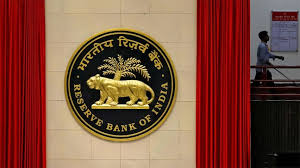
Table of Contents
RBI Monetary Policy Meet August 2024: Comprehensive Overview
In the latest Reserve Bank of India (RBI) monetary policy meeting, the central bank has decided to keep the repo rate unchanged at 6.5%. This decision has significant implications for the Indian economy, reflecting the RBI’s current stance on managing inflation and supporting economic growth. In this detailed analysis, we will delve into the reasons behind the RBI’s decision, the current state of inflation, the broader economic context, and potential future developments.
1. Background and Context
The RBI’s monetary policy decisions are pivotal in shaping the economic landscape of India. The repo rate, which is the rate at which the RBI lends to commercial banks, plays a crucial role in influencing interest rates across the economy. By maintaining the repo rate at 6.5%, the RBI aims to balance the dual objectives of controlling inflation and supporting economic growth.
The decision to keep the repo rate unchanged comes after a period of significant economic activity and evolving inflation trends. Understanding the context of this decision requires a comprehensive look at recent economic developments, both domestically and globally.
2. Inflation Trends
Current Inflation Landscape
Inflation, measured primarily through the Consumer Price Index (CPI), has been a central concern for policymakers. In recent months, inflation has shown signs of moderating. The RBI’s assessment indicates that inflation is on a declining trajectory, suggesting a reduction in price pressures compared to earlier periods.
- Historical Inflation Trends: Historically, India has experienced varying inflation rates, influenced by factors such as food prices, global commodity prices, and domestic demand. The recent high inflationary period was characterized by significant volatility, driven in part by supply chain disruptions and rising global commodity prices.
- Recent Developments: The recent decline in inflation is attributed to several factors:
- Supply Chain Improvements: Easing of supply chain disruptions has led to more stable prices for goods and services.
- Base Effects: Lower inflation rates in the base period have contributed to the apparent decline in current inflation rates.
- Government Interventions: Various government measures, including subsidies and regulatory actions, have helped stabilize prices.
- Core Inflation: Core inflation, which excludes volatile items like food and fuel, has also been monitored closely. The RBI’s focus on core inflation helps gauge underlying price pressures and the effectiveness of monetary policy.
Inflation Expectations
Inflation expectations are a critical component of the RBI’s policy framework. The central bank surveys households and businesses to gauge expectations of future inflation. Stable or declining inflation expectations can support consumer confidence and spending, which in turn can contribute to economic stability.
3. Economic Growth and Activity
Current Economic Conditions
India’s economic growth has been robust, with strong domestic demand and improved economic activity. The RBI’s decision to maintain the repo rate at 6.5% reflects its assessment of the current economic conditions and its aim to support continued growth.
- GDP Growth: The Indian economy has shown resilience, with GDP growth rates remaining positive despite global economic uncertainties. Growth has been driven by various sectors, including services, manufacturing, and agriculture.
- Consumer Spending: Consumer spending has been a key driver of economic growth. Increased disposable incomes and favorable employment conditions have supported higher consumer expenditure.
- Investment Climate: The investment climate has been favorable, with increased private sector investment and foreign direct investment (FDI) inflows contributing to economic expansion.
Sectoral Performance
Different sectors of the economy have exhibited varied performance levels:
- Agriculture: The agricultural sector has benefited from favorable monsoon conditions, leading to improved crop yields and rural incomes.
- Manufacturing: The manufacturing sector has seen a resurgence, supported by both domestic and export demand.
- Services: The services sector, particularly information technology and financial services, has continued to perform strongly.
4. Global Economic Influences
International Economic Conditions
Global economic conditions play a significant role in shaping domestic monetary policy. Key international factors include:
- Commodity Prices: Fluctuations in global commodity prices, such as oil and metals, impact inflation and trade balances.
- Geopolitical Events: Geopolitical tensions and conflicts can disrupt global supply chains and impact economic stability.
Exchange Rates and Trade
Exchange rate fluctuations impact import and export prices. The RBI monitors exchange rate movements to manage their impact on inflation and trade balances. A stable exchange rate supports predictable economic conditions, while significant volatility can pose challenges.
5. RBI’s Monetary Policy Stance
Policy Framework
The RBI’s monetary policy framework focuses on maintaining price stability while supporting economic growth. The central bank uses various tools, including the repo rate, reverse repo rate, and reserve requirements, to influence economic activity.
- Repo Rate: The repo rate directly impacts borrowing costs for banks and, consequently, interest rates for consumers and businesses.
- Reverse Repo Rate: This rate influences the liquidity in the banking system by determining the interest rate on short-term deposits with the RBI.
Monetary Policy Review
The RBI conducts regular monetary policy reviews to assess economic conditions and make necessary adjustments. The decision to keep the repo rate unchanged reflects the central bank’s current assessment and its strategy to navigate evolving economic challenges.
6. Future Outlook and Policy Guidance
Economic Projections
The RBI’s projections for the near future will be influenced by several factors:
- Inflation Trajectory: Continued monitoring of inflation trends will guide future policy adjustments.
- Economic Growth: The central bank will assess the sustainability of economic growth and potential risks.
- Global Developments: Ongoing global economic conditions and their impact on India will be considered.
Policy Expectations
The RBI’s future policy decisions will likely be data-driven, with adjustments made as needed based on economic developments. Key areas of focus will include:
- Inflation Management: Ensuring that inflation remains within acceptable bounds.
- Growth Support: Supporting economic growth while managing inflationary pressures.
- Financial Stability: Monitoring financial stability and addressing any emerging risks.







